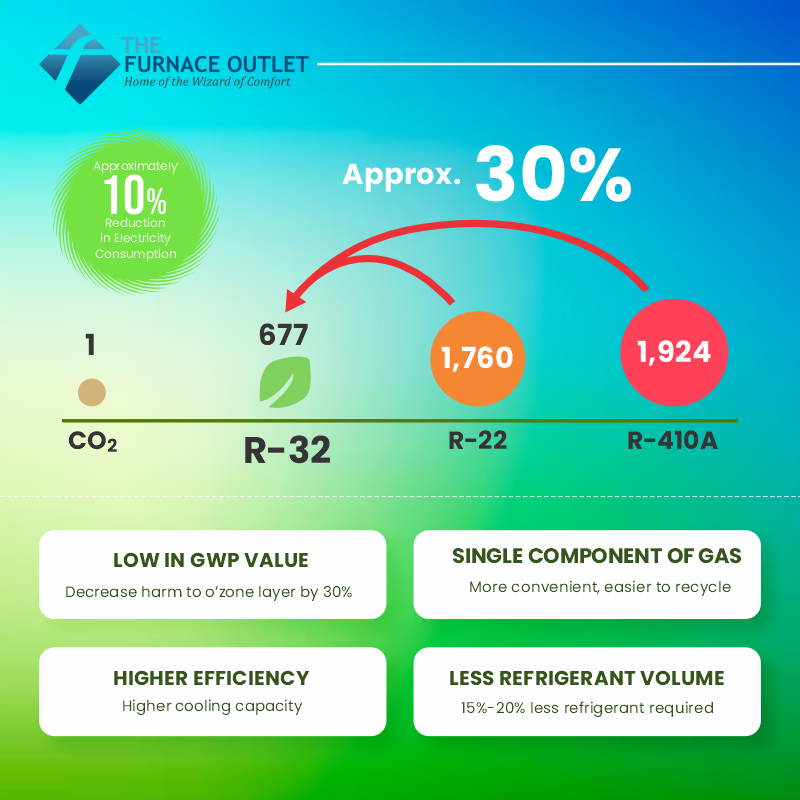In recent years, the HVAC industry has been undergoing a significant transition towards more environmentally friendly refrigerants, with R32 emerging as a leading contender. This shift is driven by various factors, including environmental concerns, regulatory changes, and technological advancements. In this blog post, we'll delve into the reasons behind the HVAC industry's move to R32 and explore the benefits and implications of this transition.
Environmental Considerations:
One of the primary drivers behind the shift to R32 is its lower global warming potential (GWP) compared to traditional refrigerants like R410A. R32 has a GWP approximately one-third that of R410A, making it a more environmentally friendly option. As concerns about climate change and ozone depletion continue to grow, the HVAC industry is under increasing pressure to adopt refrigerants with lower environmental impact, making R32 an attractive choice.
Regulatory Changes and Compliance:
Regulatory changes at both the national and international levels are also influencing the transition to R32. Governments around the world are implementing stricter regulations on the use of high-GWP refrigerants in an effort to mitigate climate change and reduce greenhouse gas emissions. By transitioning to R32, HVAC manufacturers and users can ensure compliance with these regulations and stay ahead of evolving environmental standards.
Energy Efficiency and Performance:
In addition to its environmental benefits, R32 offers advantages in terms of energy efficiency and system performance. R32 has a higher volumetric cooling capacity than R410A, meaning it can absorb and release heat more efficiently. This increased efficiency can lead to lower energy consumption and operating costs for HVAC systems using R32 refrigerant. Additionally, R32 systems may require less refrigerant charge, reducing the risk of leaks and improving system reliability.
Technological Advancements and Innovation:

Discover Top-Grade Air Conditioners: View Our Products Today
Consumer Demand and Awareness:
Finally, growing consumer awareness and demand for environmentally friendly products are influencing the HVAC industry's move to R32. As more consumers become informed about the environmental impact of traditional refrigerants, they are seeking out HVAC systems that use lower-GWP alternatives like R32. This demand is pushing manufacturers to prioritize the development and adoption of R32-based systems to meet market expectations and stay competitive.
In conclusion, the HVAC industry's shift to R32 is driven by a combination of environmental considerations, regulatory changes, technological advancements, consumer demand, and awareness. As concerns about climate change and energy efficiency continue to grow, R32 has emerged as a leading choice for its lower GWP, improved performance, and compliance with environmental standards. By understanding the reasons behind this transition, stakeholders in the HVAC industry can embrace R32 as a sustainable and future-proof refrigerant solution. If you are looking for an R32 product starting with the Amana J-Series 15,000 BTU PTAC Unit.







